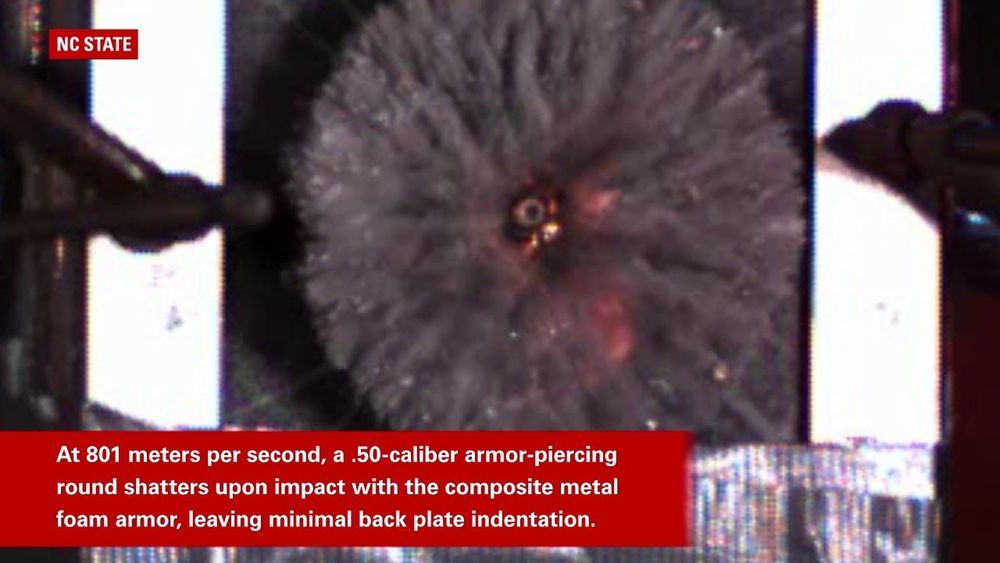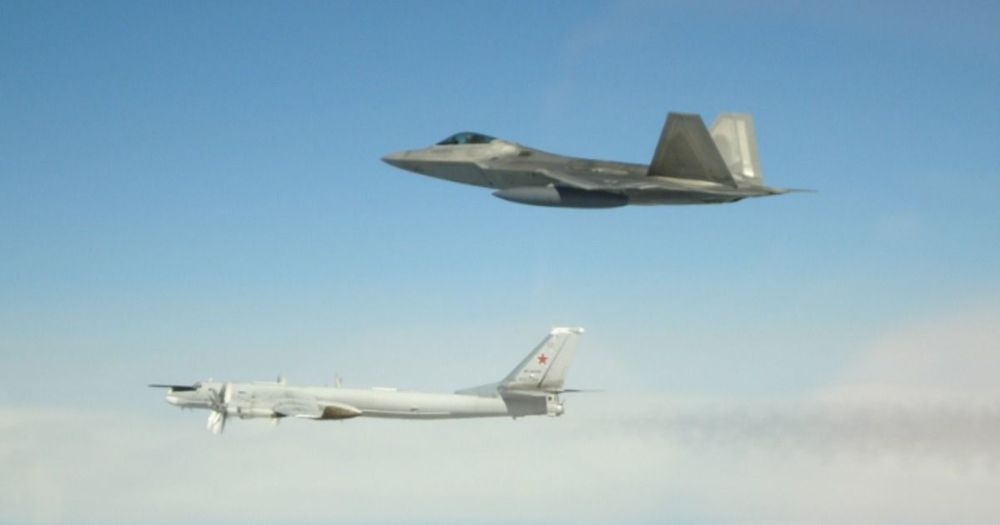Archive for the ‘military’ category: Page 207
Based on the original ballistic woven nylon developed for military body armor, dense, rugged CORDURA® Ballistic fabrics are made with high tenacity nylon 6,6 filament yarns and offer enhanced tear and abrasion resistance.
Jun 6, 2019
Metal foam stops .50 caliber rounds as well as steel – at less than half the weight
Posted by Quinn Sena in categories: materials, military

Researchers have demonstrated that vehicle armor using composite metal foam (CMF) can stop ball and armor-piercing .50 caliber rounds as well as conventional steel armor, even though it weighs less than half as much. The finding means that vehicle designers will be able to develop lighter military vehicles without sacrificing safety, or can improve protection without making vehicles heavier.
CMF is a foam that consists of hollow, metallic spheres—made of materials such as stainless steel or titanium—embedded in a metallic matrix made of steel, titanium, aluminum or other metallic alloys. In this study, the researchers used steel-steel CMF, meaning that both the spheres and the matrix were made of steel.
Jun 5, 2019
DARPA’s New Project Is Investing Millions in Brain-Machine Interface Tech
Posted by Genevieve Klien in categories: biotech/medical, cyborgs, Elon Musk, military, robotics/AI
When Elon Musk and DARPA both hop aboard the cyborg hypetrain, you know brain-machine interfaces (BMIs) are about to achieve the impossible.
BMIs, already the stuff of science fiction, facilitate crosstalk between biological wetware with external computers, turning human users into literal cyborgs. Yet mind-controlled robotic arms, microelectrode “nerve patches”, or “memory Band-AIDS” are still purely experimental medical treatments for those with nervous system impairments.
With the Next-Generation Nonsurgical Neurotechnology (N3) program, DARPA is looking to expand BMIs to the military. This month, the project tapped six academic teams to engineer radically different BMIs to hook up machines to the brains of able-bodied soldiers. The goal is to ditch surgery altogether—while minimizing any biological interventions—to link up brain and machine.
Continue reading “DARPA’s New Project Is Investing Millions in Brain-Machine Interface Tech” »
Jun 5, 2019
Could US Navy’s Railgun Help Tap Moon’s Resources?
Posted by Klaus Baldauf in categories: military, space
Jun 2, 2019
US Military Testing Whether Human Pilots Can Trust Robot Wingmen in a Dogfight
Posted by Klaus Baldauf in categories: drones, military, robotics/AI
DARPA’s Air Combat Evolution program aims to find out — and so shape America’s future arsenal.
A U.S. military research program is advancing the study of humans and machines working together by testing how well pilots and artificially intelligent entities trust each other in one of the most challenging of tasks: aerial combat, or dogfighting.
The idea behind DARPAs Air Combat Evolution, or ACE, program, is that human fighter pilots will soon be flying alongside increasingly capable drones — dubbed “Loyal Wingmen” — that will help evade other fighters and air defenses. Military leaders often describe the F-35 Joint Strike Fighter as a kind of flying command center, with the human operator working less like a traditional pilot and more like a team captain. The craft is loaded with AI features that pilots say make it easier to fly than traditional fighters. That enables the pilot to digest and put to use the immense amount of data the F-35 pulls in.
Continue reading “US Military Testing Whether Human Pilots Can Trust Robot Wingmen in a Dogfight” »
Jun 1, 2019
New way to protect against high-dose radiation damage discovered
Posted by Paul Battista in categories: biotech/medical, military, space travel
Damage of healthy intestinal cells is the main disadvantage of radiotherapy leading to the discontinuation and failure of an efficient cancer treatment, potentially causing a quick tumour recurrence. Now, a discovery published in Science by scientists from the Growth Factors, Nutrients and Cancer Group at the Spanish National Cancer Research Centre (CNIO) might be useful to protect healthy intestinal cells from radiation damage. The consequences of their findings in mice might radically change the way humans manage exposure to high levels of radiation; both for cancer research and treatment as well as for other areas like space explorations, nuclear warfare or nuclear accidents.
The Group’s work focuses on URI, a protein whose functions remain not yet fully understood. However, previous studies from the Group have found that abnormal levels of expression of this protein in certain organs can cause cancer. The study now published in Science shows that high levels of URI protein protect mice from radiation-induced intestinal damage, whereas low or no detectable levels of the protein can lead to gastrointestinal syndrome and death.
“The precise functions of URI have not been identified yet,” says Nabil Djouder, Head of the Growth Factors, Nutrients and Cancer Group at CNIO and leader of the study. “Just like pH or temperature, which the organism needs to maintain within a certain range, URI levels must also be kept within a very narrow window to regulate the proper functioning of other proteins. When URI levels are higher or lower than optimal, they may promote or protect against tumour development as well as other diseases, depending on the context.”
Continue reading “New way to protect against high-dose radiation damage discovered” »
May 23, 2019
Air Force Treating Wounds With Lasers and Nanotech
Posted by Quinn Sena in categories: biotech/medical, military, nanotechnology
Forget stitches and old-school sutures. The Air Force is funding scientists who are using nano-technology and lasers to seal up wounds at a molecular level. It might sound like Star Trek tech, but it’s actually the latest in a series of ambitious Pentagon efforts to create faster, more effective methods of treating war-zone injuries. Last \[…\].
May 22, 2019
U.S. intercepts 4 Russian bombers and 2 fighter jets near Alaska’s coast
Posted by Quinn Sena in category: military
May 22, 2019
Cyber attacks are rewriting the ‘rules’ of modern warfare—and we aren’t prepared for the consequences
Posted by Quinn Sena in categories: cybercrime/malcode, government, military
Governments are becoming ever more reliant on digital technology, making them more vulnerable to cyber attacks. In 2007, Estonia was attacked by pro-Russian hackers who crippled government servers, causing havoc. Cyber attacks in Ukraine targeted the country’s electricity grid, while Iran’s nuclear power plants were infected by malware that could have led to a nuclear meltdown.
In the US, president Trump recently declared a “national emergency” to recognise the threat to US computer networks from “foreign adversaries”.
Politically-motivated cyber attacks are becoming increasingly commonplace but unlike traditional warfare between two or more states, cyberwarfare can be launched by groups of individuals. On occasion, the state is actually caught in the crosshairs of competing hacking groups.

















